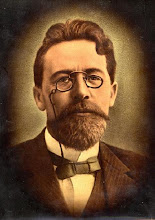The initial meaning that I concluded after independently reading “Misery” significantly changed after discussing the story with my group members. Many details were brought to my attention that I was not focusing on. A huge gap that I encountered while reading was that I wanted to know more about the death of Iona’s son. I found that other members of my group were not concerned with this aspect of the story. Instead, they concentrated more on the mare’s relationship with Iona and what she could have possible represented.
I did not focus on the mare as a “human” character within the story. I did not take note of the possible relationship between the mare being a female, the other characters that Iona was trying to connect with being male, and the line, “It would be even better to talk to women” (15). I felt that the mare was present to show the indifference people feel towards others problems and their lack of compassion. All Iona wanted was someone to listen. While all of the characters ignored and even abused Iona, all he wanted was something so simple that even a mare can do it, but those people were unwilling to provide Iona with that relief.
Through this exercise I learned the importance of multiple readings and different perspectives while analyzing a piece of literature for meaning. Everyone approaches a story with different experiences and opinions that determine how they read a story and what details they find significant. Discussing this story brought many details into light that I may have never caught on to after reading “Misery” fifty times. Also because of these different mindsets, there are many “correct” readings of a story. This is one of the first classes I have felt comfortable disagreeing with the students’ and the instructor’s interpretation of the story, because a piece of literature speaks to different people in different ways.
Monday, February 8, 2010
Subscribe to:
Post Comments (Atom)

No comments:
Post a Comment